Your home’s suitability for external wall insulation depends primarily on its wall construction and age. If you’ve got solid walls (typically found in pre-1920 properties) that measure around 9 inches thick with alternating brick lengths, your property is likely an ideal candidate for EWI. You’ll need to evaluate factors like wall condition, local planning requirements, and weather exposure. A professional assessment will reveal your property’s specific insulation potential and expected energy savings.
Key Takeaways
- Solid wall properties built before 1920 are typically excellent candidates for external wall insulation, showing clear signs like alternating brick lengths.
- Wall condition must be structurally sound and free from major cracks or damage to ensure proper adhesion of insulation materials.
- Local planning permissions and building regulations must be checked, especially for listed properties or homes in conservation areas.
- The property’s exposure to weather conditions determines the type of insulation materials needed and overall system durability.
- Building height and accessibility affect installation feasibility, with taller properties requiring specialized equipment and potentially higher costs.
Understanding External Wall Insulation Systems and Their Benefits

External wall insulation (EWI) systems consist of insulating material fixed to existing exterior walls and covered with protective rendering or cladding.
You’ll find these systems create a protective thermal barrier that greatly reduces heat loss through your walls while protecting the building’s structure from weather damage.
When you install external wall insulation systems, you’re investing in a solution that delivers multiple benefits.
Your home’s thermal performance will improve by up to 45%, leading to reduced energy bills and a smaller carbon footprint.
The system also helps prevent condensation and damp issues by maintaining consistent internal temperatures.
You’ll notice enhanced sound insulation too, particularly beneficial if you live near busy roads.
Additionally, EWI can transform your property’s appearance with various finishing options, potentially increasing its market value.
Assessing Your Property’s Wall Construction Type
Before selecting any insulation system, you’ll need to determine your property’s wall construction type through careful inspection. Your home likely features either solid walls or cavity walls, each requiring different insulation approaches.
To identify solid wall characteristics, examine your brick pattern and wall thickness. Solid walls typically show alternating brick lengths (stretchers and headers) and measure around 9 inches thick.
These walls benefit most from external insulation material compatibility due to their uniform construction. You can also tap your walls – solid walls sound more solid and dense compared to cavity walls’ hollow sound.
For homes built before 1920, you’re likely dealing with solid wall construction. Consider consulting a professional surveyor if you’re uncertain, as proper identification guarantees you’ll select the most effective insulation system for your property type.
Key Factors That Determine EWI Suitability

When evaluating your home’s suitability for External Wall Insulation (EWI), several significant factors must align to guarantee excellent performance and installation feasibility. Your property age plays a vital role, as older buildings may require specialized insulation materials and additional structural assessments.
| Factor | Impact | Solution |
|---|---|---|
| Wall Condition | Affects adhesion | Surface repair |
| Exposure Level | Determines durability | Weather-grade materials |
| Building Height | Installation complexity | Access equipment |
| Local Planning | Permit requirements | Pre-approval process |
| Property Features | System compatibility | Design modifications |
You’ll need to evaluate your home’s exposure to weather elements, wall surface condition, and existing architectural features. Each factor contributes to determining whether EWI will provide peak thermal performance for your property. Consider moisture levels, surface irregularities, and local building regulations before proceeding with installation.
Planning Permission and Building Regulations
Installing wall insulation typically requires compliance with both local planning permissions and national building regulations.
You’ll need to take into account specific planning nuances, particularly if your property is listed or located in a conservation area. These restrictions may affect the type of insulation and finishing materials you can use.
Regulatory compliance involves meeting current building standards for thermal performance, fire safety, and ventilation.
You’ll need to verify your chosen insulation system achieves the minimum U-value requirements while maintaining adequate airflow throughout your home.
Your installer should provide documentation proving compliance with Part L of the Building Regulations, which governs energy efficiency in buildings.
Before proceeding, consult your local authority’s planning department and engage a certified installer who understands both planning requirements and building regulations.
This approach will help prevent costly modifications later.
Weather Exposure and Local Climate Considerations

Local climate patterns and weather exposure greatly influence your home’s insulation requirements and performance.
You’ll need to assess your property’s exposure to prevailing winds, rainfall intensity, and solar gain to determine the most effective insulation strategy. In coastal areas, you’ll want additional protection against salt spray and driving rain, while homes in exposed hillside locations require enhanced wind resistance.
Your location’s climate zones affect both the type and thickness of insulation you’ll need. Properties in colder regions benefit from higher R-values, while those in variable weather patterns might need specialized moisture-control solutions.
Consider how your home’s orientation and surrounding landscape features impact local microclimate conditions. These factors determine not only the insulation material choice but also the installation methods needed to guarantee peak performance throughout all seasons.
Cost Analysis and Potential Energy Savings
The financial investment in wall insulation requires careful analysis against projected energy savings.
You’ll need to evaluate upfront installation costs, which typically range from $5,000 to $15,000 for an average home, depending on wall type and property size. A detailed cost comparison will help you determine your break-even point.
Your potential energy savings can reach 15-35% of your annual heating and cooling expenses.
When assessing energy efficiency improvements, factor in local utility rates, climate zone, and existing insulation levels. Most homeowners recover their investment within 5-7 years through reduced energy bills.
You’ll also benefit from increased property value and improved comfort levels throughout your home.
Evaluate available tax incentives and rebates in your area, as these can greatly reduce your initial investment and accelerate your return.
Common Installation Challenges and Solutions

While undertaking wall insulation projects, homeowners frequently encounter several technical obstacles that require careful planning and strategic solutions.
Your success depends on identifying these challenges early and implementing proper installation techniques.
Common challenges you’ll need to address include:
- Dealing with uneven wall surfaces that can affect insulation materials’ adherence
- Managing moisture barriers and ventilation requirements to prevent condensation
- Working around existing fixtures, utilities, and architectural features
- Ensuring proper material thickness without compromising exterior aesthetics
You’ll find that selecting appropriate insulation materials and working with experienced contractors can help overcome these obstacles.
Modern installation techniques now offer solutions for most structural challenges, including specialized anchoring systems and moisture-resistant barriers.
Impact on Property Value and Aesthetics
Investing in wall insulation directly influences your property’s market value and visual appeal. Modern insulation systems offer multiple finishes that can enhance your home’s property aesthetics while delivering energy efficiency benefits. You’ll find that properly installed insulation typically leads to value appreciation of 6-8%.
| Impact Factor | Short-Term | Long-Term |
|---|---|---|
| Property Value | 3-4% increase | 6-8% increase |
| Energy Bills | 25-35% reduction | 40-50% reduction |
| Curb Appeal | New finish options | Maintained appearance |
| Resale Potential | Moderate boost | Significant boost |
Your property’s exterior can be transformed with contemporary render finishes, brick slips, or textured coatings that complement your neighborhood’s character. You’re not just adding insulation; you’re investing in a system that enhances your home’s overall market position while maintaining its architectural integrity.
Alternative Insulation Options for Unsuitable Properties

For homes deemed unsuitable for traditional wall insulation, multiple alternative solutions can effectively improve thermal performance.
Understanding your property’s specific constraints will help you select the most appropriate insulation method that aligns with your home’s structural characteristics.
- Internal thermal boards or dry lining systems that maximize interior space while providing effective insulation
- Spray foam applications in targeted areas, particularly effective for irregular spaces and hard-to-reach cavities
- Green roofing solutions that combine natural insulation with sustainable living benefits, suitable for flat or gently sloped roofs
- Multi-layer reflective barriers that create thermal zones without considerable structural modifications
Each alternative offers distinct advantages depending on your property’s architecture and your specific requirements.
These options can greatly reduce heat loss while maintaining your home’s structural integrity, often proving more suitable than conventional wall insulation methods for challenging properties.
Essential Pre-Installation Property Checks
Before proceeding with any wall insulation installation, thorough property assessments serve as critical safeguards against potential complications and guarantee maximum performance of your chosen system.
Your pre-installation assessment should evaluate wall condition, structural integrity, and moisture levels to determine insulation compatibility.
You’ll need to check for existing damp issues, cracks, or deterioration in your walls that could compromise the insulation’s effectiveness.
Ascertain your property’s ventilation meets current building regulations and assess the condition of your roof, guttering, and drainage systems.
Your windows and doors must be properly sealed, and any wall fixtures like satellite dishes or external pipes should be evaluated for modification requirements.
These checks help you join the community of homeowners who’ve successfully implemented energy-efficient solutions while protecting their property’s long-term value.
Frequently Asked Questions
Can External Wall Insulation Help Reduce Outside Noise Pollution?
Yes, you’ll experience significant noise reduction benefits with external wall insulation. The added material layers create an effective sound barrier, reducing outside noise by up to 50% while improving your home’s thermal performance.
How Long Does External Wall Insulation Typically Last Before Needing Replacement?
You’ll get 25-30 years from properly installed external wall insulation. Lifespan factors include weather exposure and installation quality. Regular maintenance tips: inspect annually and repair any damage promptly to maximize longevity.
Will External Wall Insulation Affect My Home Insurance Premiums?
Your insurance coverage may be affected both positively and negatively. While premium costs could decrease due to improved property protection, you’ll need to inform your insurer about the installation to maintain valid coverage.
Can I Install External Wall Insulation Myself to Save Money?
Like scaling Mount Everest alone, DIY external wall insulation isn’t recommended. While cost savings seem tempting, you’ll need professional expertise, specialized equipment, and certifications to guarantee proper installation and meet building regulations.
Does External Wall Insulation Work Well With Solar Panel Installations?
Yes, your external wall insulation works excellently with solar panels, enhancing overall energy efficiency benefits. You’ll maximize solar panel compatibility while creating a well-insulated home that delivers superior thermal performance and energy savings.
Conclusion
Like a protective shield around a fortress, external wall insulation can transform your home’s thermal performance. You’ll need to carefully evaluate your property’s structural integrity, wall composition, and local climate conditions before proceeding. If your home isn’t suitable for EWI, don’t despair – alternative solutions like cavity wall insulation or internal wall insulation can still help you achieve your energy efficiency goals.
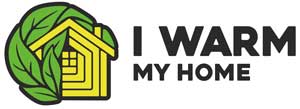
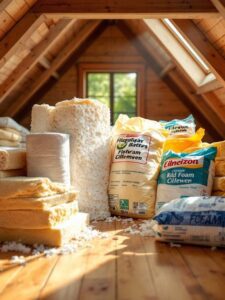
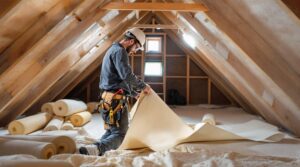
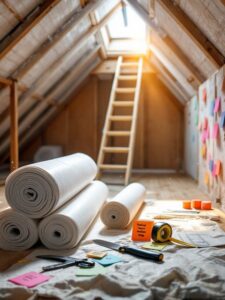




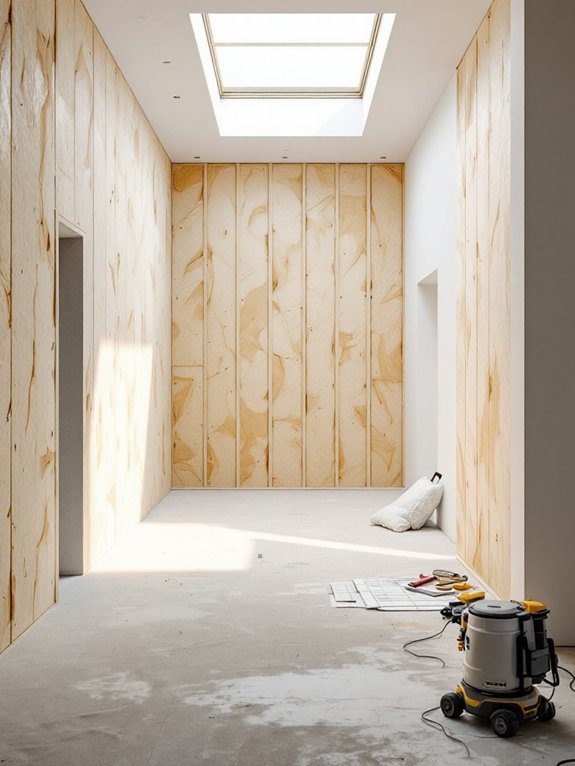
3 Responses
Thank you for your sharing. I am worried that I lack creative ideas. It is your article that makes me full of hope. Thank you. But, I have a question, can you help me?
I don’t think the title of your enticle matches the content lol. Just kidding, mainly because I had some doubts after reading the enticle.
Your point of view caught my eye and was very interesting. Thanks. I have a question for you. https://accounts.binance.info/es-MX/register?ref=GJY4VW8W